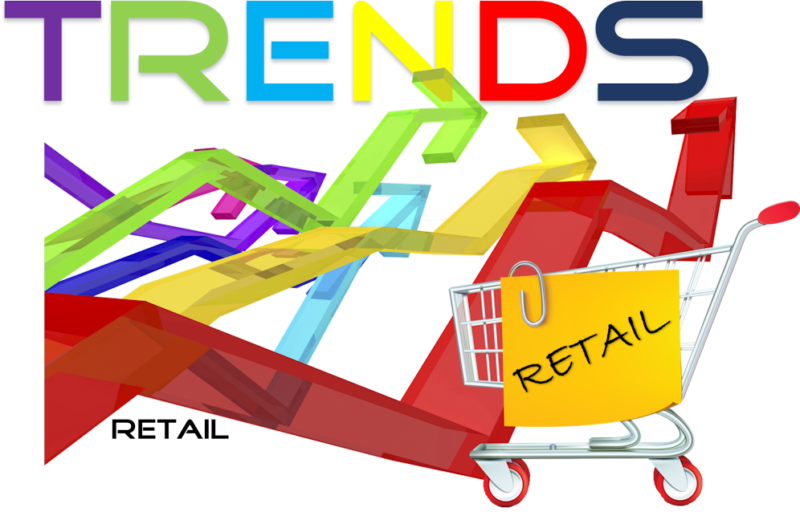For generations, consumers have been the axle around which the American economy revolves. During the holiday season, consumers surprised many experts with their generous spending — even though they were confronting inflationary pressures. The question is: How are consumers going to behave going forward? In large measure, consumers will determine whether America avoids a deep recession. At the same time, high consumer demand could enflame inflationary fears. This is the conundrum faced by retailers as they enter the new year. During the last recession, former Harvard Business School colleagues John Quelch and Katherine E. Jocz noted, “Purchases depend on consumers’ having disposable income, feeling confident about their future, trusting in business and the economy, and embracing lifestyles and values that encourage consumption. … During recessions, of course, consumers set stricter priorities and reduce their spending.”[1]
Inflation, recession, and changing consumer behavior aren’t the only business environment changes confronting retailers. Retail journalist Ben Unglesbee writes, “Hey retailers, it might be time to ditch your stores, move your inventory to the metaverse, replace your staff with robots, switch from cash to crypto and invest all your profits in some blockchains.”[2] Hopefully, his tongue was firmly planted in his cheek when he wrote that. The metaverse is immature, crypto is crashing, and blockchains are still trying to fulfill their potential. So what trends are going to impact the retail sector this coming year?
2023 Retail Trends
Trend 1. Omnichannel Operations. The importance of omnichannel operations came home to roost during the pandemic. Retailers with experience in omnichannel operations generally fared better than those who scrambled to catch up. Journalist Audrey Kemp reports that changing consumer behavior has permanently affected omnichannel operations. She explains, “Yes, many shoppers around the world were eager to leave the house and return to the stores, but their behaviors have changed. Online and in-store shopping have come to serve distinct purposes for shoppers and that trend will only continue.”[3] Jacquelyn Baker, chief commerce experience officer at VMLY&R Commerce, told Kemp, “The role of the store has changed for shoppers. Consumers can have whatever they want, when they want, on-demand, digitally. For purchases beyond everyday essentials, meanwhile, the store serves more as a showroom for inspiration and ‘retailtainment’. Physical stores play a tactile purpose for consumers to immerse themselves in brands and experiences that ignite the senses and bring joy.” Concerning omnichannel operations, business writer Brendan McConnell observes, “Omnichannel shopping has quickly become the norm. Consumers want to be able to research online, and buy in-store. Or vice versa. And the distinction between those two has faded in recent years. … This means that retailers need to provide integrated online and offline experiences And those two worlds have to transition seamlessly into each other.”[4]
Trend 2. Hybrid Consumers. The marriage of online and in-store shopping has created the hybrid consumer. Futurist Bernard Marr notes, “Hybrid shopping is about bringing the best of both of these worlds together — either online or offline — to create customer journeys that tick all of the boxes.”[5] He agrees with Baker that experiential retail is the future and those experiences need to appeal to the hybrid consumer. “In the case of offline shopping,” he writes, “this means understanding who we are and what we want as we walk into the store — just as an e-tailer would when we arrive at their website. In the world of online retailing, it means developing methods of delivering the same experiential shopping experiences we enjoy in the real world. This could be through innovative technology enabling personalization or virtual and augmented reality solutions.”
Trend 3. Deep Retail. Business writer Allan Jay predicts artificial intelligence (AI) will used to a greater extent to improve what he calls “deep retail.”[6] “Marketers have mined data from users’ smartphone and browser habits for years,” he writes, “but it will come to a head as the third decade of the millennium approaches. And this will happen because of AI. … Studies show that AI adoption can save retailers US$340 billion annually due to a more efficient supply chain.” As I noted at the beginning of this article, understanding consumer behavior is critical for retailers. AI tools, like the Enterra Shopper Marketing and Consumer Insights Intelligence System™, can help retailers understand emerging consumer behavior. Jay concludes, “AI will have a more intimate view of the user and what they need more than the users themselves know. It will be in charge of a secure network that uses analytic tools, behavioral databases, algorithms, and image recognition. It will combine it with technology from an IoT ecosystem to target the user’s consumption habits. Too dystopian? No worries — it will have a ton of regulations to limit the type and amount of data it can harvest. It will likely also need consent from the user.” Armed with user-provided data, brands and retailers will be able to better personalize their products and services. Deb Marotta, Vice President for the Retail Industry at Hitachi Solutions America, explains, “On-demand personalization continues to spread to all retail areas and is only being further refined as new technologies provide customers with a greater degree of control. We’re well past the days where personalization constituted having first name fields in your direct emails.”[7]
Trend 4. Sustainability. Jay notes, “Sustainability is not optional anymore, as far as consumers are concerned. A study from Unilever highlights the changing stance of consumers in this aspect. 21% of consumers now report that they would prefer brands with an active environmental responsibility campaign.” Marr agrees with that assessment. “To succeed in retail in 2023,” he writes, “businesses have to continue to adapt to the fact that the crux of consumer buying decisions increasingly lies around questions of ethics, environmentalism, and sustainability.” Jay cautions, however, that greenwashing won’t be tolerated. He writes, “Consumers detect facile environmental initiatives that are mere ad hoc campaigns. This is why most companies are now using sustainable and ethical practices more closely aligned with their organization’s values. This allows them to commit to these campaigns more productively and for the long-term.” Boston Consulting Group (BCG) analysts David Young and Simon Beck insist, “Rarely in business history have CEOs had more significant opportunities to capture advantages, reset industries, and anchor their legacies than at this moment in the global race to sustainability.”[8]
Trend 5. Social Commerce. A number of experts predict that social commerce will become an important part of any brand’s or retailer’s marketing strategy. The staff at Intelligence Node predicts, “Social commerce will take the front seat.”[9] They add, “Social commerce is already on the rise due to its convenience and non-invasive advertising. It is forecasted to reach $30.73 billion in sales in 2023, accounting for 20% of global retail eCommerce sales. 75% of retailers already sell on social media, with social storefronts and shoppable posts. Further, influencer marketing is becoming one of the more sought-after marketing channels for eCommerce brands and retailers due to the rapid return on investment, strategic targeting of the right online audiences, and positive advertising.” This should come as no surprise. As Marotta notes, “With each passing year, Millennials and Gen Zers account for a larger percentage of the consumer popularity, both domestically and internationally. As early tech adopters and tech natives, both generations are more accustomed to digital services and instant convenience than their Gen X and Baby Boomer counterparts.” She adds, “Directly ‘shoppable media’ — which includes live streams, social commerce, virtual consultations, and shoppable ad formats — is expected to be the fastest-growing advertising category for the foreseeable future. Forbes reports that roughly two-thirds of consumers today use social media as part of their shopping strategy, while Insider Intelligence states that social commerce sales are expected to reach $45.73 billion this year, with more than half of the country’s adults making a purchase on social media.”
Concluding Thoughts
Other trends, such as buy-online-pickup-in-store (BOPIS), buy-online-return-in-store (BORIS), and buy-online-pickup-at-curbside (BOPAC), will also continue to play an important role in the retail sector. Most experts agree, however, that whether consumers are shopping online or in-person, they are looking for great experiences.
Footnotes
[1] John Quelch and Katherine E. Jocz, “How to Market in a Downturn,” Harvard Business Review, April 2009.
[2] Ben Unglesbee, “5 Tech revolutions that haven’t happened (at least not yet),” Retail Dive, 16 November 2022.
[3] Audrey Kemp, “The top three retail and e-commerce trends set to shape 2023,” The Drum, 20 September 2022.
[4] Brendan McConnell, “10 New Retails Trends You Need to Know for 2023,” Hootsuite, 20 October 2022.
[5] Bernard Marr, “The Top Five Retail Technology Trends In 2023,” Forbes, 14 October 2022.
[6] Allan Jay, “10 Future Retail Trends & Forecasts for 2022/2023 – A Look Into What’s Next,” FinancesOnline, 7 November 2022.
[7] Deb Marotta, “Top 14 Retail Trends to Watch in 2023,” Hitachi Solutions Blog, 2022.
[8] David Young and Simon Beck, “The Strategic Race to Sustainability,” Boston Consulting Group, 12 July 2022.
[9] Staff, “Preparing for 2023: Retail Trends to Watch Out for,” Intelligence Node Blog, 2022.





